SDGs in the National Strategy for Sustainable Development
The goals of the National Strategy for Sustainable Development are closely related to the Agenda 2030 goals and they are elaborated to guide political activities in the direction of sustainable development.
The private sector can effectively contribute to some of these goals.
With respect thereto, Snam is committed to make its own contribution, adopting a philosophy of sustainable development.
SDG 1 – NO POVERTY
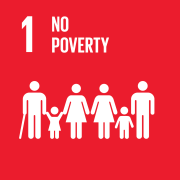
Some goals of the National Strategy for Sustainable Development:
To combat poverty and social exclusion by eliminating territorial differences
Snam’s commitment:
In 2017 Snam took an important step in transforming its social commitment by promoting the establishment of its own company Foundation. The Foundation will be in contact with the territory, ready to intercept pathways to social innovation by implementing projects and initiatives and responding to social needs.
SDG 2 - ZERO HUNGER
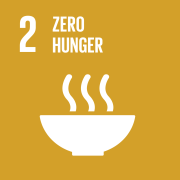
Some goals of the National Strategy for Sustainable Development:
To promote healthy lifestyles and strengthen prevention systems
Snam’s commitment:
Snam is a member of “Workplace Health Promotion”, an initiative promoted by the Lombardy Region composed of a pathway to best practices aimed at improving peoples’ lives. Snam is promoting the adoption of virtuous behaviour in the company involving proper diet, personal and social well-being, physical activity, road safety, sustainable mobility, combating the consumption of tobacco, alcohol and other addictive substances.
SDG 3 - GOOD HEALTH AND WELL-BEING
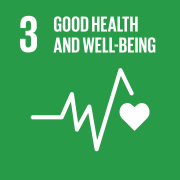
Some goals of the National Strategy for Sustainable Development:
Promoting good health and well-being
Snam’s commitment:
Snam has always been committed to promoting occupational health, achieving important results, with the reduction, over the years, of workplace accidents. Reducing accidents not only helps to create a better working environment it also helps towards avoiding social costs for the community. Snam also promotes the health and well-being of employees through its own welfare system
SDG 4 - QUALITY EDUCATION

Some goals of the National Strategy for Sustainable Development:
Guaranteeing accessibility, quality and continuity in training
Snam’s commitment:
In Snam, training plays a fundamental role in supporting the development of management and the company population. Snam launched a School-Work Alternation project to bring young people closer to the working world providing them with skills and know-how. Through the activities of the Snam Institute, a centre of excellence for training, the Company intends to develop skills, not only in the company but also outside of it, to strengthen corporate citizenship.
SDG 5 - GENDER EQUALITY
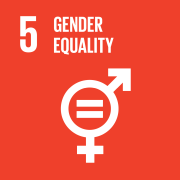
Some goals of the National Strategy for Sustainable Development:
To guarantee gender equality
Snam’s commitment:
Diversity is considered an important aspect for the development of the company, specifically gender equality. Snam implements policies to support maternity and parenthood, with men and women benefitting equally. Snam is a contributing member of Valore D, a leading association of businesses which promote diversity, talent and female leadership.
SDG 6 - CLEAN WATER AND SANITATION
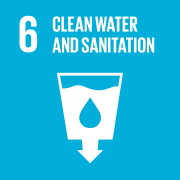
Some goals of the National Strategy for Sustainable Development:To implement integrated water resource management in all levels of planning
Snam’s commitment:
Snam uses fresh water main for sanitary, fire safety and green-area irrigation purposes. Quantities are limited and managed rationally to avoid waste.
SDG 7 - AFFORDABLE AND CLEAN ENERGY
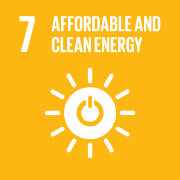
Some goals of the National Strategy for Sustainable Development:
To increase energy efficiency and energy generation from renewable sources, thus avoiding or reducing the impact on cultural heritage and landscape
Snam’s commitment:
Snam is engaged in investments and actions to improve the energy efficiency of its plants.
In February 2018 it signed an agreement for the acquisition Tep Energy Solution (Tep) one of the leading Italian companies operating in the energy efficiency sector.
In 2017 the 35% of the electricity consumed by Snam was produced from renewable sources. Snam is also active in the development of the use of renewable Biomethane fuel
SDG 8 - DECENT WORK AND ECONOMIC GROWTH
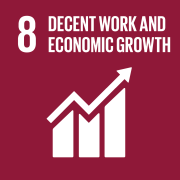
Some goals of the National Strategy for Sustainable Development:
To increase sustainable and quality employment
Snam’s commitment:
Snam is a company that generates “good employment”, it carries out qualified and specialised activities throughout Italy offering stable and continuous working relationships.
The School – Work Alternation project aims to guide young people and to strenghten relationships with the territories where the recruitment process is often more difficult.
SDG 9 - INDUSTRY, INNOVATION AND INFRASTRUCTURE
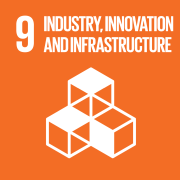
Some goals of the National Strategy for Sustainable Development:
To innovate processes and products and promote technology transfer
Snam’s commitment:
Snam creates quality, reliable, sustainable and resilient infrastructures built through always adopting the best technologies available. The Company recently launched Snam Global Solutions, which offers design, consulting and project management activities for the gas market. The aim is to globally develop the experience, distinctive skills and know-how of Snam, gained in its 75 years of operation and management of the entire gas infrastructure supply chain in Italy and Europe.
SDG 10 - REDUCED INEQUALITIES
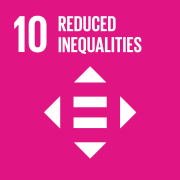
Some goals of the National Strategy for Sustainable Development:To combat all discrimination and promote respect for diversity
Snam’s commitment:
Snam respects everyone’s dignity and offers equal opportunities in every phase and every aspect of the employment relationship, avoiding all forms of discrimination based on sex, age, health, nationality, political opinion or religious views. Diversity is considered an asset to the Company and for its growth.
SDG 11 - SUSTAINABLE CITIES AND COMMUNITIES
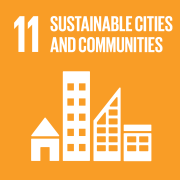
Some goals of the National Strategy for Sustainable Development:
To regenerate cities, guaranteeing accessibility and ensuring sustainability of connections
Snam’s commitment:
Snam formed the Snam4Mobility company dedicated to the development of a sustainable mobility system through the construction, management and maintenance of CNG plants. In coming years Snam will invest to promote the development of compressed gas filling stations in Italy with the aim of creating over 250 distributors. The company’s commitment is also made explicit in the development of partnerships with car manufacturers to expand the range of natural gas vehicles.
SDG 12 - RESPONSIBLE CONSUMPTION & PRODUCTION
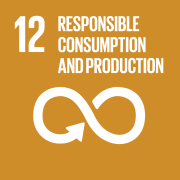
Some goals of the National Strategy for Sustainable Development:
To dematerialise the economy by improving the efficiency of resource use and by promoting circular-economy mechanisms
Snam’s commitment:
Snam is committed to fostering the use of biomethane, making an important contribution to promoting an economic model based on sustainability and the circular use of resources.
SDG 13 - CLIMATE ACTION
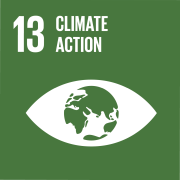
Some goals of the National Strategy for Sustainable Development:
To decarbonise the economy
Snam’s commitment:
Natural gas is a fundamental resource in the strategy to decarbonised the economy.
Snam is committed to promoting the use of natural gas in the place of other fossil fuels with a high carbon content. Specifically, it promotes the use of alternative forms such as liquefied natural gas and compressed natural gas in maritime and land sectors and the use of biomethane
SDG 14 - LIFE BELOW WATER
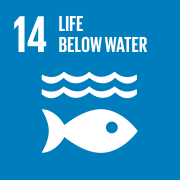
Some goals of the National Strategy for Sustainable Development:
To maintain the vitality of the seas and prevent impact on the marine and coastal environment
Snam’s commitment:
Snam uses sea water for cooling some plants in the Panigaglia (SP) regasification terminal. The water used is then returned to the sea untreated.
SDG 15 - LIFE ON LAND
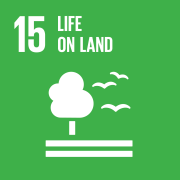
Some goals of the National Strategy for Sustainable Development:
To safeguard and improve the conservation status of species and habitats for terrestrial and aquatic ecosystems
Snam’s commitment:
Snam adopts the best practices in the construction of infrastructures designed to safeguard the territory and protect biodiversity and ecosystems. Specifically, following in-depth research and monitoring, recovery operations are carried out in the territories to maintain the natural balance and avoid any impact on the vegetation, water and existing ecosystems.
SDG 16 - PEACE AND JUSTICE STRONG INSTITUTIONS
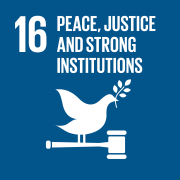
Some goals of the National Strategy for Sustainable Development:
To ensure legality and justice
Snam’s commitment:
Snam maintains and continuously reinforces its corporate governance system, aligning it with national and international best practices. The company also has an anti-corruption policy that takes its inspiration from the Code of Ethics.
The collaboration with Transparency International represents a significant step along the path that the company has for some time been taking in the prevention and combating of any form of corruption and unlawfulness.
Through an “ethics and integrity agreement” Snam extends its fundamental business ethics principles to all economic operators which aspire to directly or indirectly receiving the support of the company.
SDG 17 - PARTNERSHIPS FOR THE GOALS
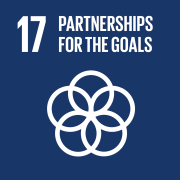
Some goals of the National Strategy for Sustainable Development:
To strengthen partnerships within the various sectors: Governance and transparency, Guidance, Health, Agriculture, Safeguarding the heritage, Private Sector.
Snam’s commitment:
Snam collaborates locally and nationally with the authorities, participating in numerous associations and committees by providing its skills and know-how to be able to participate in social innovation and sustainable development processes. In 2017, as part of Partner’s Day, Snam held a meeting of partners and stakeholders taking an in-depth look at the future scenarios of the world of energy.
“Young energy”, how to bring young people closer to the working world

Young people is the focus of one of the most challenging SDGs: enabling everyone to receive a quality education and to be the master of their own future.
Snam is also committed to contributing to this goal with a school–work alternation project that was the subject matter of a memorandum of understanding with the Ministry of Education, Universities and Research. Young Energy aims to guide high school students into the job market through by the development of new skills and knowledge, and it also satisfies two other important social objectives: taking action to strengthen relationships with the territory and to change the generational mix. Through a stronger relationship with the players in the territory, new opportunities for integration and recruitment will arise, especially in Southern Italy, where the company is making significant capital expenditures and where the recruitment process is often more difficult. The opportunity seized is within the purview of Italian Law 107/2015 – part of the “Good School” legislation – which introduced the school– work alternation programmes.
Snam has worked in close collaboration with schools in each of six different regions, developing a three-year project, directed to third, fourth and fifth year high school students, with a new teaching method focused on enabling students to acquire tools and skills useful to enter into the labour market.
2017/2018 figures are approximately:
- 600 students involved
- 9 high schools involved
- Approx 60 traineeships activated
- Approx 90 hours per trainee
- Approx 50 Snam personnel involved in the project
The training programme, the content and methods of which are shared with the schools involved, was organised based on the educational and professional profile of the students, to provide them with a valid and useful learning experience. Senior mentors, who accompanied the students along all the phases of the project, were identified in the training course and company managers, who contributed with culture, skill and know-how, were involved.
Young Energy provides:
- opportunities to get to know and approach the company via meetings at the schools;
- in class training, focused on acquiring soft skills and guidance tools for the working world;
- in class work projects regarding business-related issues;
- company visits to Snam’s territorial facilities;
- traineeships in the various local operational venues for some students.
Snam for “Youth In Action for Sustainable Development”
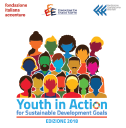
Snam is partner of Youth in Action for Sustainable Development Goals, a competition promoted by Fondazione Italiana Accenture, Fondazione Eni Enrico Mattei and Fondazione Giangiacomo Feltrinelli, intended for “under 30s” to promote the most innovative ideas capable of facilitating the attainment of SDGs in Italy. Proposals must demonstrate solutions with a high social impact and which feature a technological component.
Snam is also ready to offer a paid traineeship to one of the winners from among those who have distinguished themselves in terms of innovativeness and positive impact of the project.